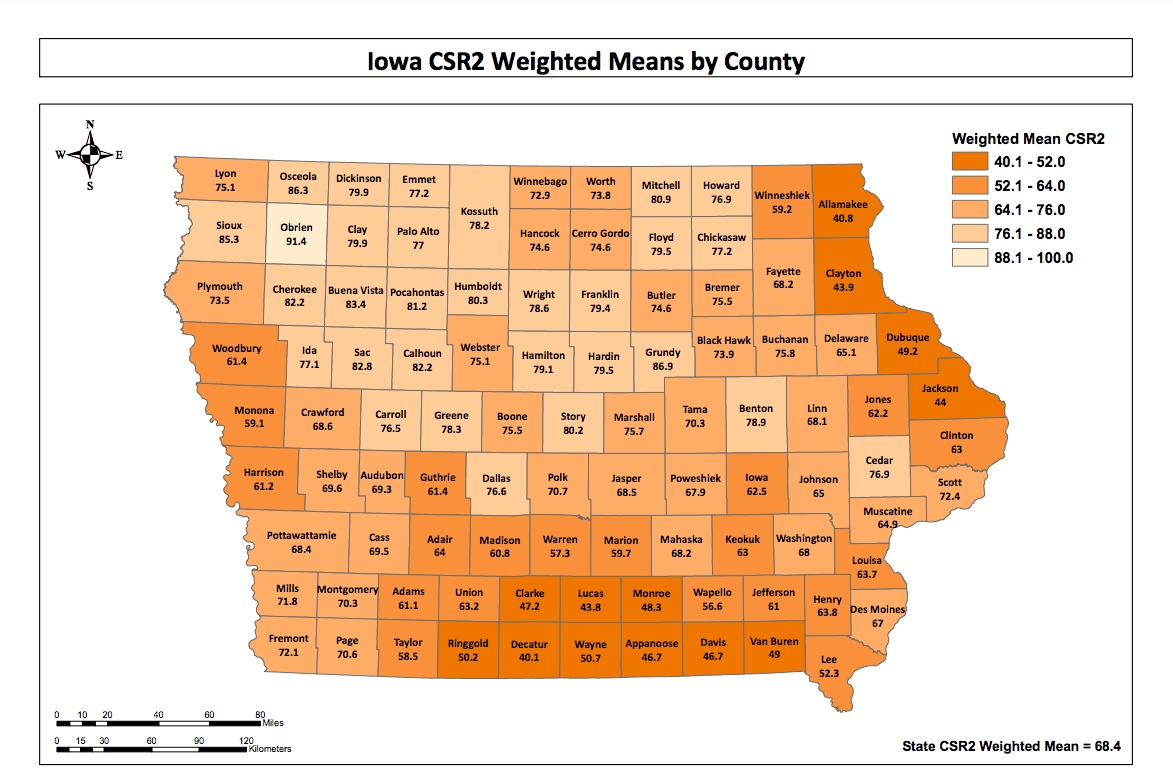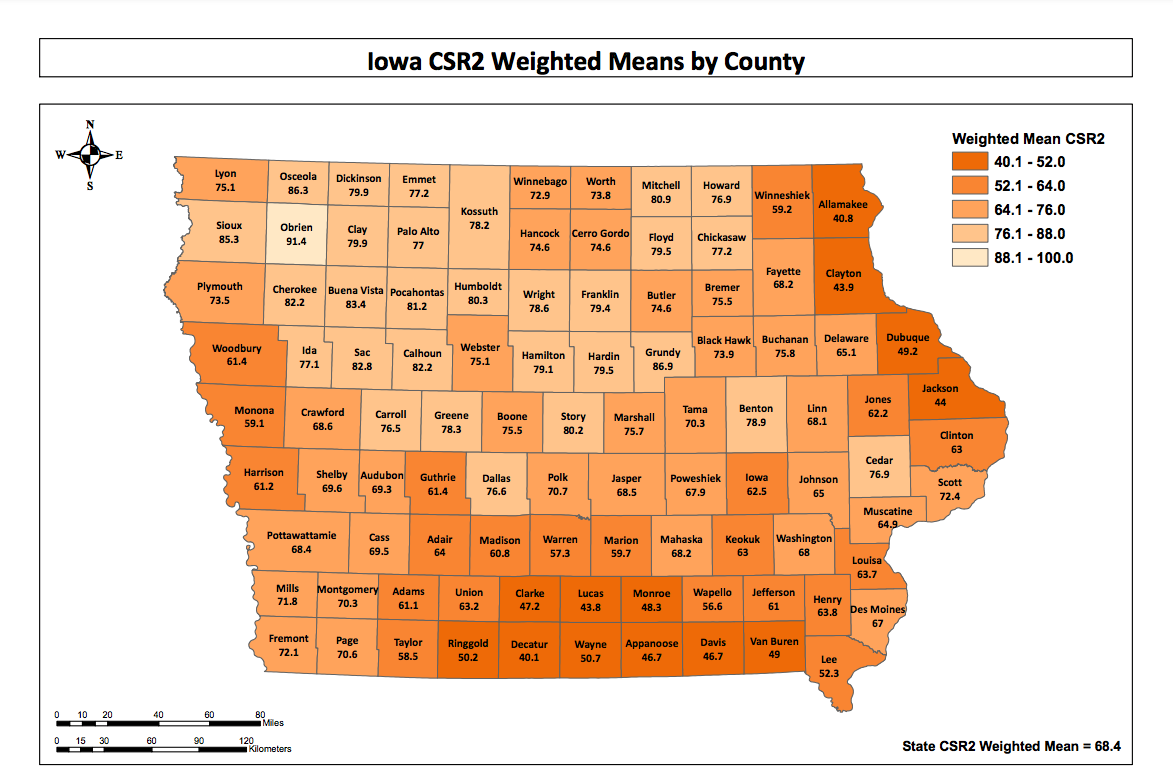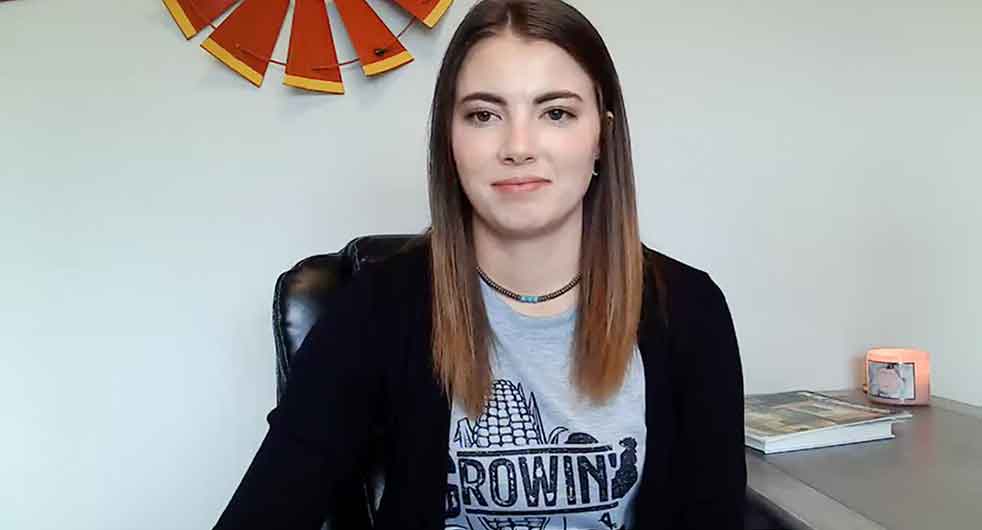Corn Suitability Rating (CSR) Explained
In 1971, Thomas Fenton a professor at Iowa State University developed the Corn Suitability Rating (CSR). It is used to measure the quality of the soils of a piece of farmland. The CSR2 formula includes six components and is calculated on a map unit basis using data and maps from the Iowa Cooperative Soil Survey. Read more here about what’s included in each component of the equation. In 2013, CSR was re-vamped to CSR2 as a new and improved system to calculate the soil productivity rating. We use CSR2 in Iowa, but many surrounding states have a productivity index as well. Such as National Commodity Crop Productivity Index (NCCPI) and PI (Productivity Index).
Soil Productivity vs. Soil Fertility
CSR2 studies a soils productivity – not soil fertility. Soil fertility can change depending on the nutrients in the soil, crop grown, farming practices, etc. This is why you would perform a soil test to determine the soil’s fertility. Soil productivity however does not change! It measures a farms ability to be intensely farmed over a long period of time. It is a constant number between 0-100, 100 being the best.
Why is CSR2 Important
CSR2 is important when it comes to determining what a farm might be worth. It is used to determine how to tax farmland. Higher quality farms with a higher CSR2 value are taxed more than lower quality farms. Same applies to determining how much a farm is worth on the market. Typically, higher CSR2 farms are worth more and sell at a higher amount then lower CSR2 farms.
This doesn’t mean that a low CSR2 farm will always sell at a lower amount. Some lower CSR2 farms (such as pastureland, development land, hunting/recreational ground) can sell for more than tillable farms. There are other factors that determine a farms worth. Demand, commodity prices, inflation, interest rates, buyer pool, location, amount of acres, access, improvements, etc. can all affect a farms value as well.
CSR2 Formula
Calculating Farmland Value based on CSR2
Many of my clients ask, “What is your opinion on what my farm is worth?”. To answer their question, I typically first take a look at the CSR2 value of the farm especially if it is an all tillable farm. In this scenario, I use a database that calculates the CSR2 of the farm and it generates a soils map for me to study. I then look at the $/CSR2 from recent sales, surveys, and reports, for the average of the county of where the farm is located.
I take that average and multiple it by the CSR2 value of the farm. For example a farm is 92 CSR2 in a county with and average of $165/CSR would be be worth around $15,180/acre. This is just an estimate. I will sometimes adjust this number depending on the other factors I listed above that affect farmland values in my free market analysis that I provided to interested sellers.
Do Buyers Look at CSR2 Values of Farms?
Yes and no. Some buyers/bidders I talk to want to know the CSR2 value right away and some don’t factor it into their decision making of buying a farm. Often though, bidders on a farmland auction or buyers putting in an offer will use the $/CSR2 calculation on what they think the farm is worth. From my example above of $165/CSR, one buyer might think the farm is worth more than the average and bid $180/CSR2. Rr $16,560/acre and some might only be willing to bid up to $150/CSR or $13,800/acre. The $/CSR2 is simply a guideline a buyer might follow and tool to use in determining what the farm is worth. It is just one factor.
Iowa CSR2 Averages per County
Below you will see a map of Iowa with each counties average CSR2 value. Iowa’s state average CSR2 is 68.4. You will notice from the map that O’Brien has the highest CSR2 average of 91.4 in NW Iowa and Decatur has the lowest rating of 40.1 CSR2.




